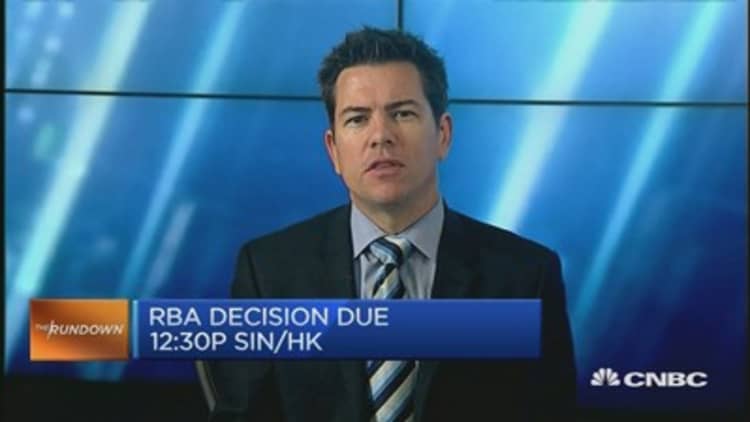
The Reserve Bank of Australia (RBA) is set to meet on Tuesday against a backdrop of improving economic conditions at home but increased uncertainty abroad as Greece drama continues to unfold and concerns of a credit bubble in China linger.
Taking into account the myriad of factors, economists expect the central bank is likely to stand pat this month after having reduced interest rates twice this year, in February and May.
"The combination of having already delivered 50 basis points of cuts in H1 and the more positive domestic numbers are expected to keep the RBA firmly on hold next week," said Paul Bloxham, chief economist for Australia and New Zealand at HSBC.
"We expect the RBA to be in 'wait and watch' mode, as it seeks more information about the full impact of the cuts it has already delivered this year," he said.
The past month has brought stronger economic data on several fronts, including employment, housing and business sentiment. Business confidence, for example, surged to a nine-month high in May, receiving a boost from lower borrowing costs and a federal budget that offered tax incentives for small business, the National Australia Bank's monthly survey of over 400 firms showed.
"If these improving trends continue, as is our central case, we expect that the RBA will not need to deliver further cuts in this easing phase," said Bloxham.
"However, low wages growth means that inflation is likely to remain benign, which is likely to leave the RBA with an 'easing bias'," he said.
HSBC's expectation is for central bank to hold its key cash rate at a record low 2.0 percent for the next 18 months.
While there are encouraging signs, the economy is not out of the woods just yet, with continued pockets of weakness in the mining and retail sectors. Retail sales rose just 0.3 percent on month in May, below the 0.5 percent forecast by economists in a Reuters poll.
The Australian dollar also remains a sticking point for the central bank, which would be more comfortable with the currency at around $0.68-$0.70 or roughly 10 percent lower than current levels, according to Bloxham.
Other market watchers, however, agreed that the RBA was likely to hold fire on rates for some time.
Read MoreThe Bufferoo portfolio: What Buffett would buy in Australia
"The central bank has injected a significant level of stimulus into the economy, with the latest cut in May. Even though the economy is underperforming, there is reluctance to inject additional stimulus for fear of igniting already‐worrying pockets of the property market," Moody's Analytics wrote in a note.
"The RBA maintains an easing bias to keep the shine off the Australian dollar, its preferred method of helping the economy rebalance away from mining investment."
It would take a significant deterioration in economic activity to push the central bank to lower borrowing costs further, added Nizam Idris, head of fixed income and currencies strategy at Macquarie Group.
"Economic data has stabilized somewhat so they have room to wait and see."


